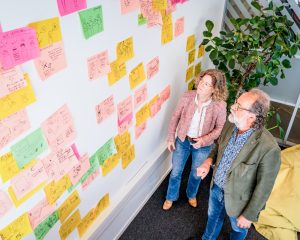Media: Technologie in de volwasseneneducatie (2)
Inclusive technology in educational pathways for adults
In an interview (in Dutch) with Lotte Geertsen (Program manager Inclusive Society) and Walter Baets (Wicked Problems officer), about technology in adult education, they explain that a different way of thinking is needed to innovate. Met Mij from Eindhoven Engine, is designed for people with lack of basic skills, is a perfect example.
𝑇ℎ𝑖𝑠 𝑖𝑠 𝑝𝑎𝑟𝑡 𝑡𝑤𝑜 𝑜𝑓 𝑎 𝑡𝑤𝑜-𝑝𝑎𝑟𝑡 𝑖𝑛𝑡𝑒𝑟𝑣𝑖𝑒𝑤. 𝑅𝑒𝑎𝑑 𝑝𝑎𝑟𝑡 𝑜𝑛𝑒 ℎ𝑒𝑟𝑒.
[Article is in Dutch]
Eindhoven Engine News – December 2024
In this edition of Eindhoven Engine News: Innovation accelerator Eindhoven Engine enters new phase, Transforming basic skills support with AI and more!
What else is happening at Eindhoven Engine?
New students at Eindhoven Engine
In September, six talented students from Fontys, Avans, and TU/e joined Eindhoven Engine. They will contribute to our four key programs:
- Sustainable Semicon
- Future-Proof Care
- Inclusive Society
- and Livable Region.
Their mission? To devise innovative solutions to significant societal challenges, directly impacting our region. With their fresh perspectives and creative energy, they are set to turn theory into practice and bolster our mission.
In their first week, the students were immediately tasked with tackling issues within their respective pillars, generating their initial ideas. The first mini demo day showcased the students’ inspiring viewpoints and innovative thinking!

More students
Fontys Crossover Lab
In the Fontys Crossover Lab, 25 students are taking on the challenge of addressing a significant social issue. By thinking and acting radically, utilizing system analysis, and adopting a multi-disciplinary approach, they are working within the Inclusive Society framework. Each group aims to develop a design, proposal, or recommendation that addresses the complex problem of the lack of basic skills.
Our Bridge Builders team provides weekly inspiration and feedback, guiding the students throughout the project. Their efforts will culminate in a final exhibition at Fontys in November.
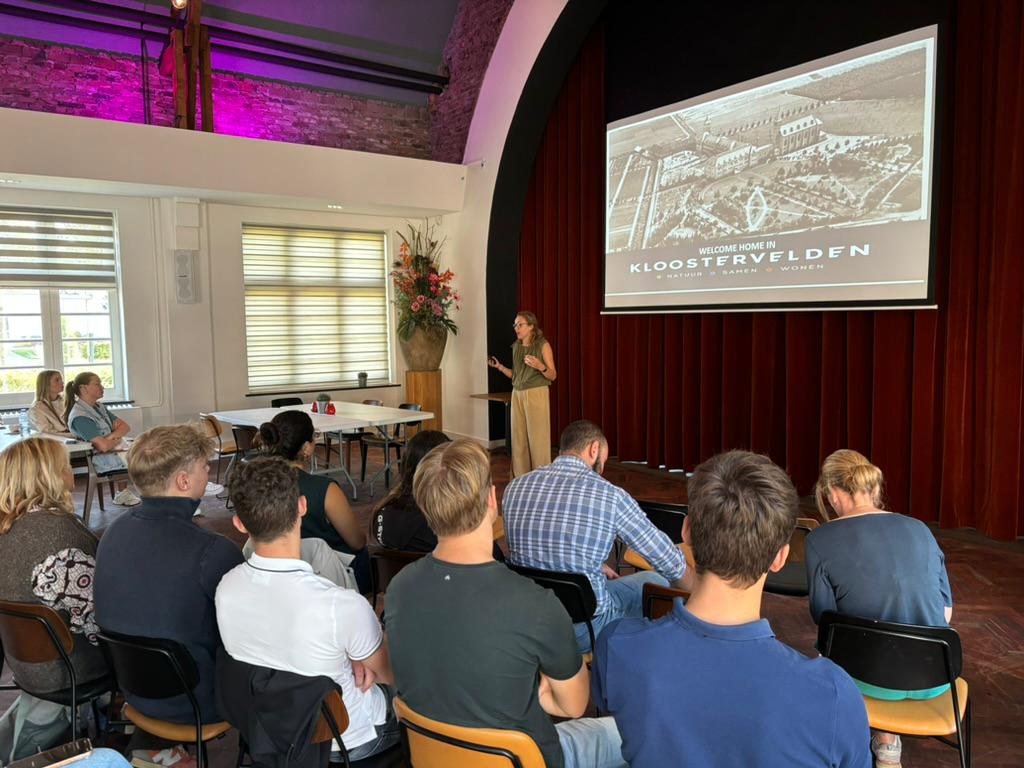
Project from Kempenhaeghe
Another 19 students have started at Eindhoven Engine. These students from Fontys Paramedic and Avans Business Innovation took up a challenge from Kempenhaeghe, a center of expertise for complex epilepsy, sleep disorders and neurological learning and developmental disorders, to strengthen the involvement of the community in care for residents of Kloostervelden, a neighborhood in the village of Sterksel, Noord-Brabant. In this neighborhood residents of Kempenhaeghe live together with regular residents of Sterksel .
This challenge provides multiple learning components for the students, addresses current challenges in specific domains for the clients, and contributes to Eindhoven Engine’s mission to tackle the larger ‘wicked problem’ of making healthcare in the Netherlands future-proof.
The program spans multiple years, with research results being handed over to new groups of students in a relay-like manner, ensuring a sustainable impact.
The Smart Heat Shed, but different
Hi, my name is Jamy de Lange. I am 21 years old, and I am currently finalizing my third year of my bachelor’s degree in Business Innovation.
At the end 2023 I worked on an OpenCall project with TNO and Emergo called the Smart Heat Shed (SHS). The SHS is an innovative storage facility that houses an installation for heating and cooling buildings. My challenge was make the SHS suitable for the housing corporations, so that it could be installed for many houses.
Getting started
The first step was to get a better understanding of de SHS by doing research. On the basis of these insights I was able to make questions for the housing corporations that were were already testing the SHS in practice (at a small scale), which is why I wanted to know about their experiences. The insight I gained from the interviews showed me that there was still some work to do to get de SHS suitable for the housing corporations.
After obtaining insights from my research I organized brainstorm sessions that were focused on the feedback from the housing corporations. I even wanted to try, if possible to use the SHS outside of the housing market (which is totally different than the purpose of which it is built). The results of this made me start to think about an interesting solution. Something that would bring music to everybody’s ears…
New insight
The concept I came up with is focused on applying the SHS to festivals. Further research revealed that some festivals use generators, consuming significant amounts of diesel. Lowlands, for example uses 120,000 liters of diesel to generate electricity. This is why I was certain I had to delve deeper in this direction.
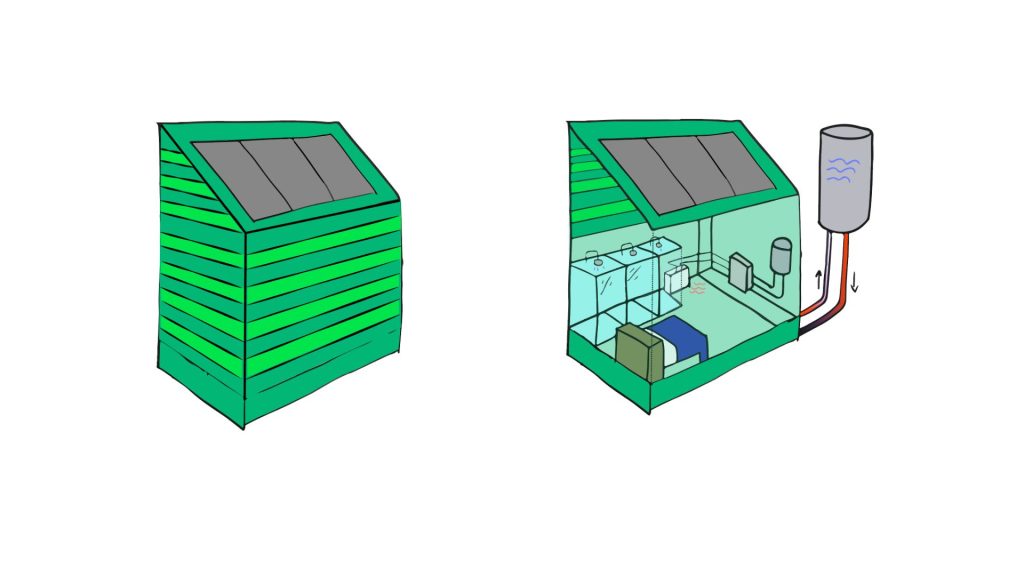
“Some festivals use generators, consuming significant amounts of diesel. Lowlands for example uses 120,000 liters of diesel to generate electricity.”
Smart Heat Shelter prototype
First I came in contact with a stakeholder at Emergo, just to make sure that my concept would be interesting for them. An enthusiastic reaction prompted me to focus on this concept. Later, I send an email to Lowlands, which, to my surprise, was submitted to the director. He provided feedback that gave me insight on adapting the concept for general application to festivals.
The Smart Heat Shelter
After the positive reactions I adjusted the concept based on the feedback given. After this step I tested it again until I had formed my final concept (see prototype picture). I am proud to present to you: The Smart Heat Shelter. This concept allows festivals to lease a certain number of sheds, which can be placed at an available spot. Once installed, the sheds use sunlight to produce heat, which can be used for showers or to heat the sheds when used as accommodation. . The sheds are in different varieties for guests to enjoy different types of stay.
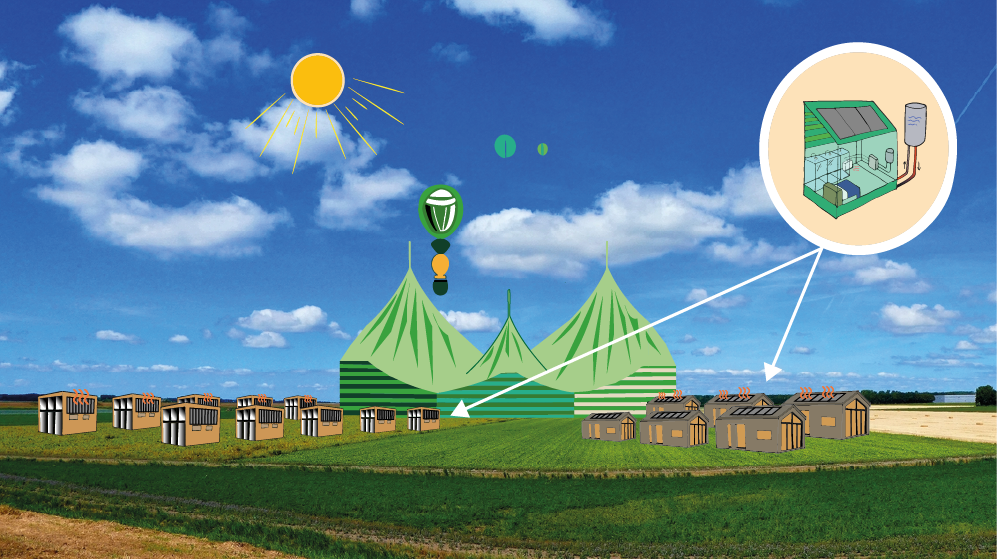
Recently, I engaged with numerous specialists across different sectors, seeking guidance from a business mentor and consulting professionals in eco-friendly (residential) building. Through these discussions, I’m refining my concept to make sure it’s ready for the marketplace.
Should you have any inquiries or suggestions after perusing this article, don’t hesitate to email me at: j.d.lange2@tue.nl
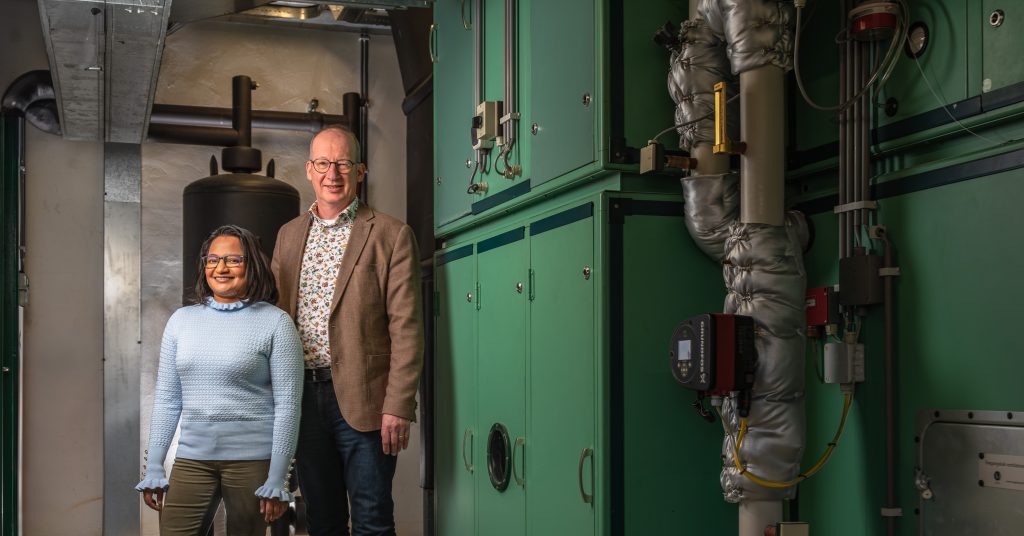
“I never saw myself working at Kropman,” Shalika Walker confesses. “And honestly, I might not have hired Shalika,” Joep van der Velden admits, seated beside her. “But how the OpenCall of Eindhoven Engine changed things. We’ve now created a new position within Kropman specifically to bring Shalika on board,” says Joep with a big smile.
We are at one of the offices of Kropman. This company designs, builds, maintains, and manages building installations, including climate control. “Kropman, rooted in construction, is traditionally less dynamic compared to sectors like semiconductors or the medical industry. So, working here was not on my radar,” Shalika shares.
Kropman’s Workspace: More Than Meets the Eye
“Welcome to our living lab,” Joep announces as he leads me into a spacious, open-plan office. At first glance, it looks ordinary, with dark gray carpets, white adjustable desks, and black office chairs. Joep notices my lukewarm reaction and gives a knowing sigh, directing my attention upward. “The real innovation is actually hidden above us in the ceiling.” I follow his gaze to a beige suspended ceiling, and he points out a translucent cap. “Those are sensors. They allow us to monitor and adapt the office environment, responding to the current scenario or the presence of workers.”
At Kropman, the pride lies in being system integrators. We source pumps from one company, sensors from another, and piping and operating systems from yet another. Our goal is to seamlessly blend these components, providing our customers with a unified operating system that manages lighting, climate control, and solar panels, among other things. This integration is meticulously crafted to enhance the experience for our clients’ employees, focusing on maximal efficiency and environmental sustainability, using as little energy as possible.
Embracing Open Collaboration for Innovation
Creating an integrated system might seem straightforward, but it’s a challenging endeavor. We’re in a field dominated by heavyweights like Siemens, Honeywell, and Signify, each offering products with proprietary systems and unique data outputs, typically closed to external systems. To navigate this, we developed our software to manage and optimize the diverse systems a client might have. However, the need for a testing ground became apparent. Clients often hesitate to open their buildings for experimental setups; hence, we transformed our Breda office into a living lab.
True partnership proved elusive until we found a more receptive community in the Brainport region.
We strongly believe in an open environment for research and development. Our efforts to collaborate with universities and companies across and beyond Europe, however have been met with limited success. True partnership proved elusive until we found a more receptive community in the Brainport region. This shares a work and research philosophy similar to our own company’s, plus communication is direct and efficient, enabling us to quickly and easily connect with each other. This welcoming atmosphere was pivotal when Wim Zeiler, a former colleague now with Eindhoven University of Technology and still an advisor at Kropman, introduced us to the Eindhoven Engine OpenCall. Recognizing its potential to foster meaningful partnerships, we eagerly seized this opportunity.

Eindhoven Engine’s OpenCall: A Catalyst for Collaboration
“Working with Eindhoven Engine offers a unique experience,” Shalika explains. “We share a location with a variety of companies and students, all engaged in their own projects. This diversity is beneficial. It’s not just about casual connections, like chatting at the coffee machine; we also attend sessions to share and discuss project progress.
For instance, while working on a data prediction project, I overheard a researcher at Eindhoven Engine’s Festival of Disruption event discussing data usage in cancer research. It didn’t click immediately, but later, the idea struck me at home: we could collaborate and enhance our respective research.
These interactions open up new perspectives and inspire innovative thinking. “This collaborative atmosphere was the reason Kropman signed up for three projects in a row. One project focused on detecting and diagnosing faults in building climate systems. The second project involved personalized thermal comfort systems, allowing employees to adjust their workspace climate via a smartphone app. The third was an assessment of CO2 sensors in the market, evaluating their accuracy for reliable CO2 readings in schools.
Although these projects are completed within Eindhoven Engine, we continue to build on the research and improve the products developed.” “And that’s why we brought Shalika on board,” says Joep.
Human-data interaction to enhance office well-being
Hi, my name is Hans Brombacher and I am a fourth year Industrial Design Ph.D. candidate. My work focuses on the topic of human-data interaction to enhance office well-being and is part of the POWEr FITTing project of Eindhoven Engine.
Three case studies
In the landscape of workplace technology, sensing systems play a crucial role in gathering data for understanding building performance and employee activities. However, a common challenge arises: individuals often feel disconnected from these systems, being treated merely as passive recipients of data. Three case studies propose practical solutions to address this issue.
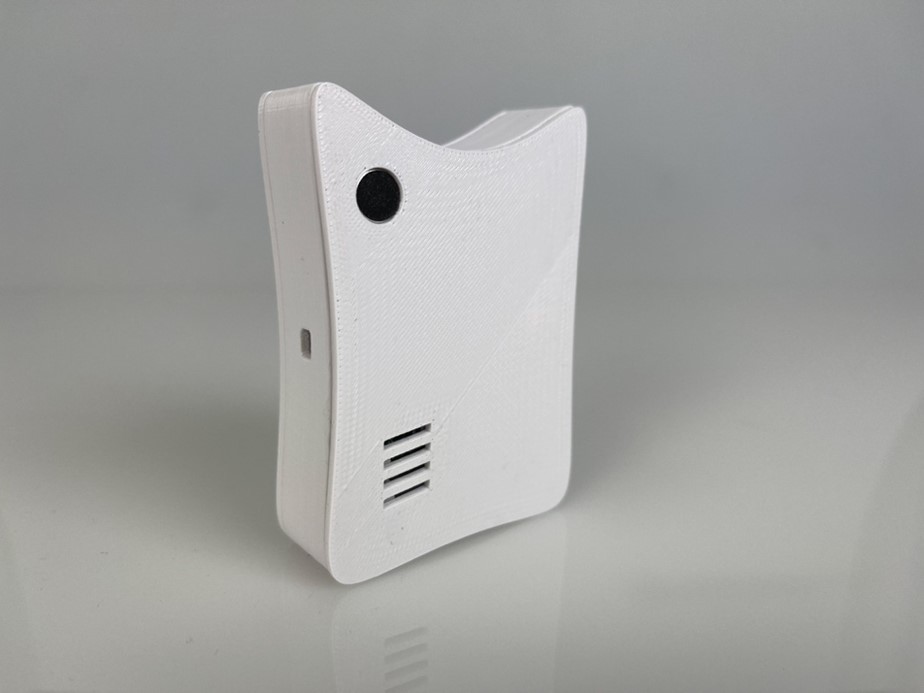
Case 1. SensorBadge
Case 1 introduces SensorBadge, an ego-centric sensor platform allowing employees to actively participate in data collection and analysis. This approach emphasizes the importance of seamlessly integrating sensor technology into daily routines while ensuring individuals have control over their data. The study underscores the need for clear and understandable data representations to facilitate informed decision-making.
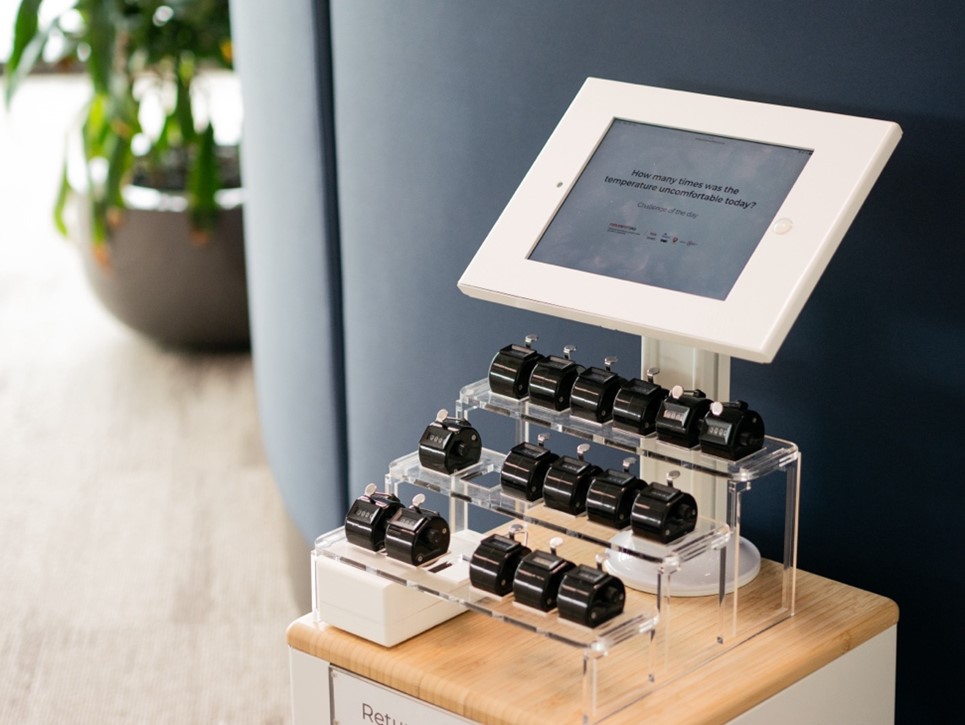
Case 3. Click-IO
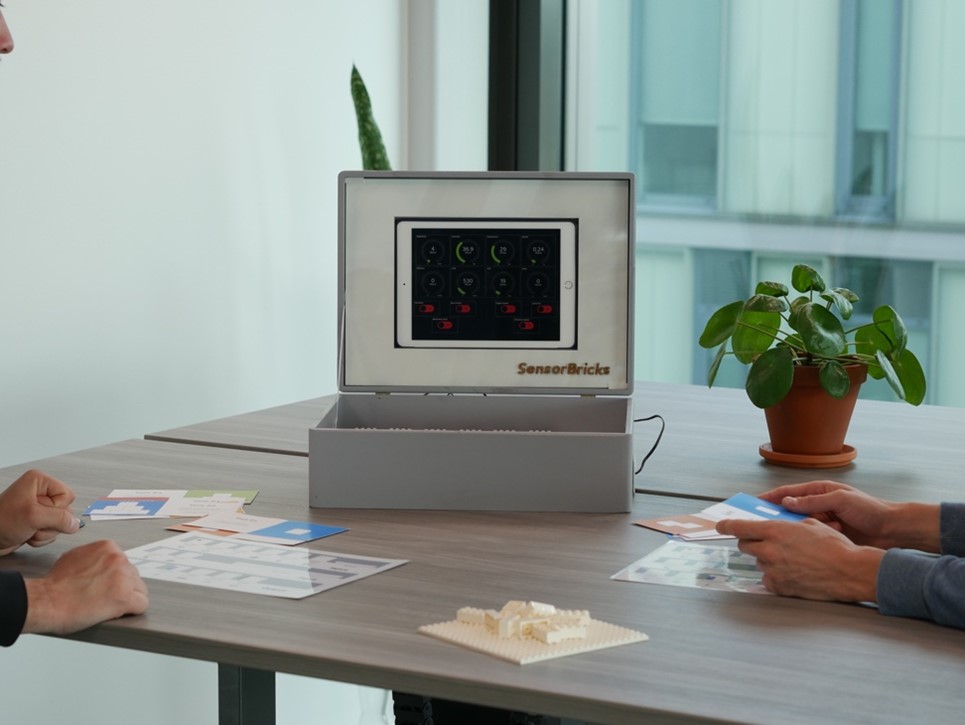
Case 2. SensorBricks
Human-centered design
These case studies demonstrate the importance of human-centered design in workplace sensing technologies. By prioritizing user engagement, control, and understanding, these approaches pave the way for more meaningful insights and improved well-being in the modern workplace.
Integration of findings
Within our final study, which will start soon, we will integrate the findings of these studies into a unified artifact, prioritizing human-centric design principles. This aims to enhance data literacy, facilitate real-time feedback on well-being, and ensure employee control over data. Implementing such an ecosystem in diverse workplace settings could provide valuable insights into its effectiveness and ethical implications, ultimately fostering a more fulfilling and productive work environment.
Media: ‘Slim schuurtje’ voorziet gebouwen het hele jaar door van energie (DUTCH)
Op de TU/e Campus in Eindhoven werken twee startups aan een nieuwe ontwikkeling die de energietransitie moet helpen versnellen. De startups combineren zogeheten warmtegevelpanelen met slimme energieopslag in de vorm van een berging; de zogeheten Smart Heat Shed.
Daardoor is bijvoorbeeld ook ‘s winters voldoende energie beschikbaar om een woning of kantoorpand te verwarmen. Om het systeem verder te verbeteren is een proefopstelling gebouwd op de TU/e Campus. Het project is één van 28 projecten van innovatieaccelerator Eindhoven Engine en is mede mogelijk gemaakt door Regio Deal Brainport Eindhoven.
Source: Brainport Eindhoven
Festival of Disruption filled with energy and enthusiasm
The Festival of Disruption’s second edition thrived with energy and enthusiasm. Kicking off the day, architect and urban designer Floris Alkemade offered a compelling perspective on how to embrace transformative changes.
Engaging workshops
Following this inspiring start, attendees were presented with seven engaging workshops, each delving into methods to expedite innovation, including ‘Design doing’, ‘Accelerating transitions via disruption’ and ‘1+1=3.’ Moreover, they had the chance to stay up to date on the latest developments in Eindhoven Engine’s OpenCall projects and the Emergence Lab initiative focusing on low literacy. As the day drew to a close, the atmosphere was charged with excitement during the wrap-up quiz, concluding a day, filled with learning, inspiration, and networking.
Did you miss out on the festival or do you want to relive the day? Get an impression of it here!
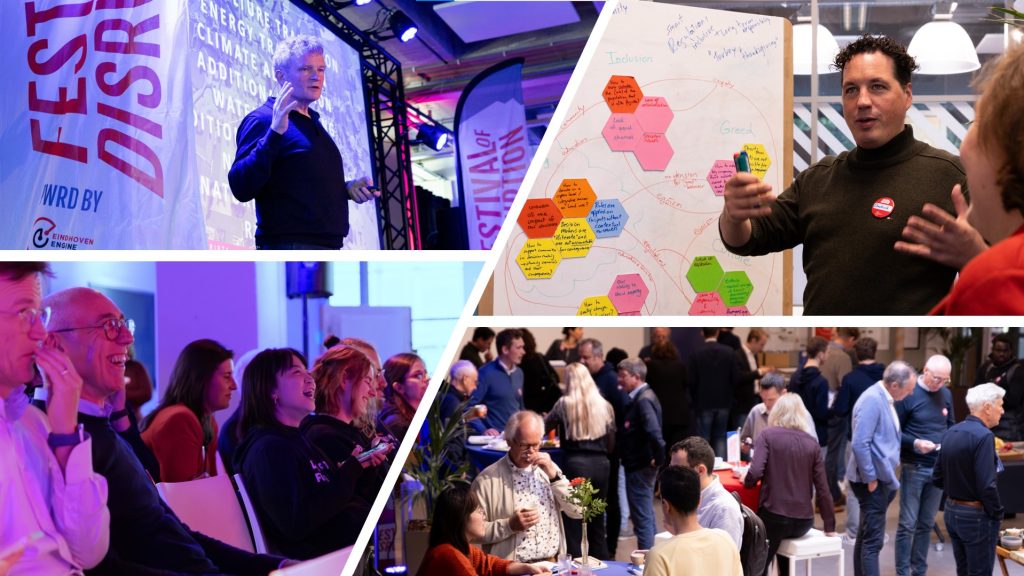

Eindhoven Engine News – November 2023
In this edition of Eindhoven Engine News: Flashback Festival of Disruption 2023, Innovator in the spotlight Petros Zimianitis & more!
What else is happening at Eindhoven Engine?
Towards automated personal comfort systems for heating, cooling and ventilation
Hello, my name is Petros Zimianitis (31 years old). I come from Greece and I was an EngD trainee in the Smart Buildings and Cities program at Eindhoven University of Technology. I studied Physics as my bachelor’s and did my master’s in Computational Physics in Greece.
Driven by my curiosity and my eagerness to come up with innovative solutions to interesting technical challenges, I started my Engineering Doctorate traineeship in 2021, to contribute to the world of the built environment.
Are we using energy efficiently?
In the Netherlands, buildings are responsible for a great proportion of the total energy consumption. It is estimated that there can be significant energy savings by improving building installations and conditioning systems. Another important issue is the reported dissatisfaction of occupants in non-residential buildings regarding their perceived comfort and air quality. This is not a very efficient way of using energy, especially now that the world is moving to more sustainable energy generation. There are also a lot of research findings regarding the differences in perceived comfort across individuals.
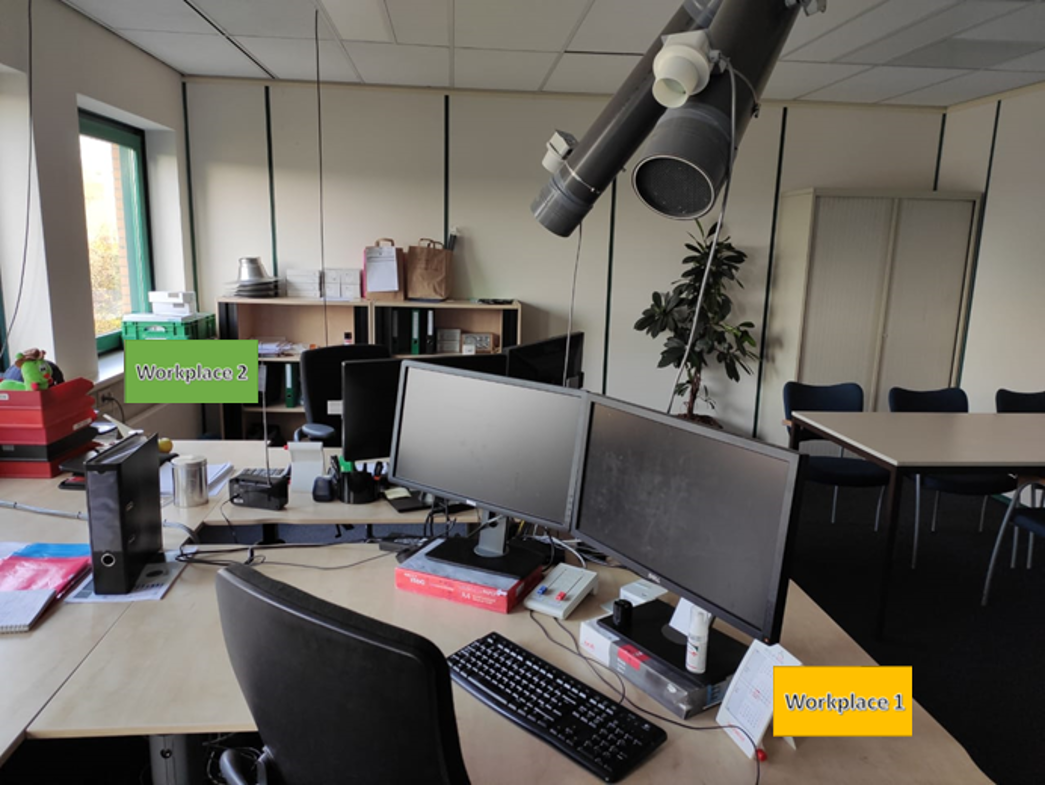
Individualizing comfort in offices
My project, ‘Towards automated personal comfort systems for heating, cooling and ventilation’, is part of the Brains4Buildings consortium. It aims to take the step from research towards design and, thus to develop and test a prototype personalized comfort system (PCS), controlled by a machine learning model, as a module for building management systems for office buildings. The control inputs for the system come from both objective measurements of the environmental conditions around the occupant as well as the occupants’ perceived thermal comfort and perceived air quality.
System development
The prototype PCS was developed in a real office environment, in the living lab of Kropman in Breda. Prior to now, there was been a lot of research performed in controlled experiment rooms (climate chambers) at universities and other institutes. The benefit of developing such a system in a real office environment is that the system and the interaction that the occupants have with it can be tested in real-world conditions.
Performance
During the tests, the system showed promising performance. The machine learning models were able to predict the perfect settings for the volunteers the majority of the time. It was also reported that the volunteers that were using the PCS were felt comfortable throughout the day, whereas other people that worked in the same building in normal offices were experienced some kind of discomfort throughout the day.
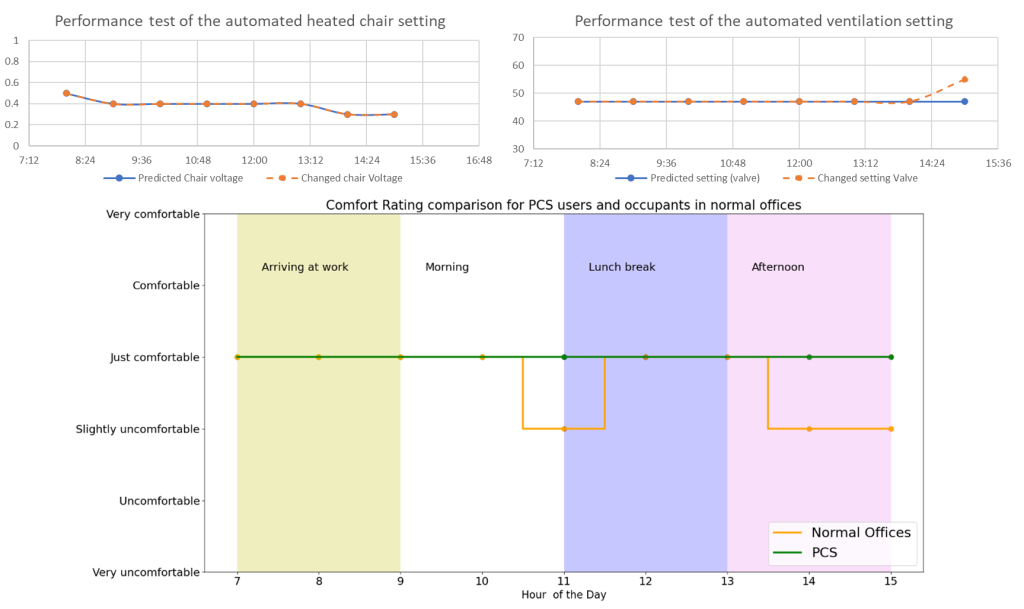
What does this mean?
By individualizing comfort systems, there are huge gains that can be made in energy use. PCSs are using significantly less energy for the same task than central conditioning systems. A combination of these systems can prove to be much more energy efficient than the systems currently in use, thus, enabling buildings to easily integrate sustainable on-site energy generation solutions. All this is possible, while still providing increased levels of comfort to the occupants, which also extends to higher productivity and overall improvement of the occupants’ well-being!
By individualizing comfort systems, there are huge gains that can be made in energy use. PCSs are using significantly less energy for the same task than central conditioning systems
